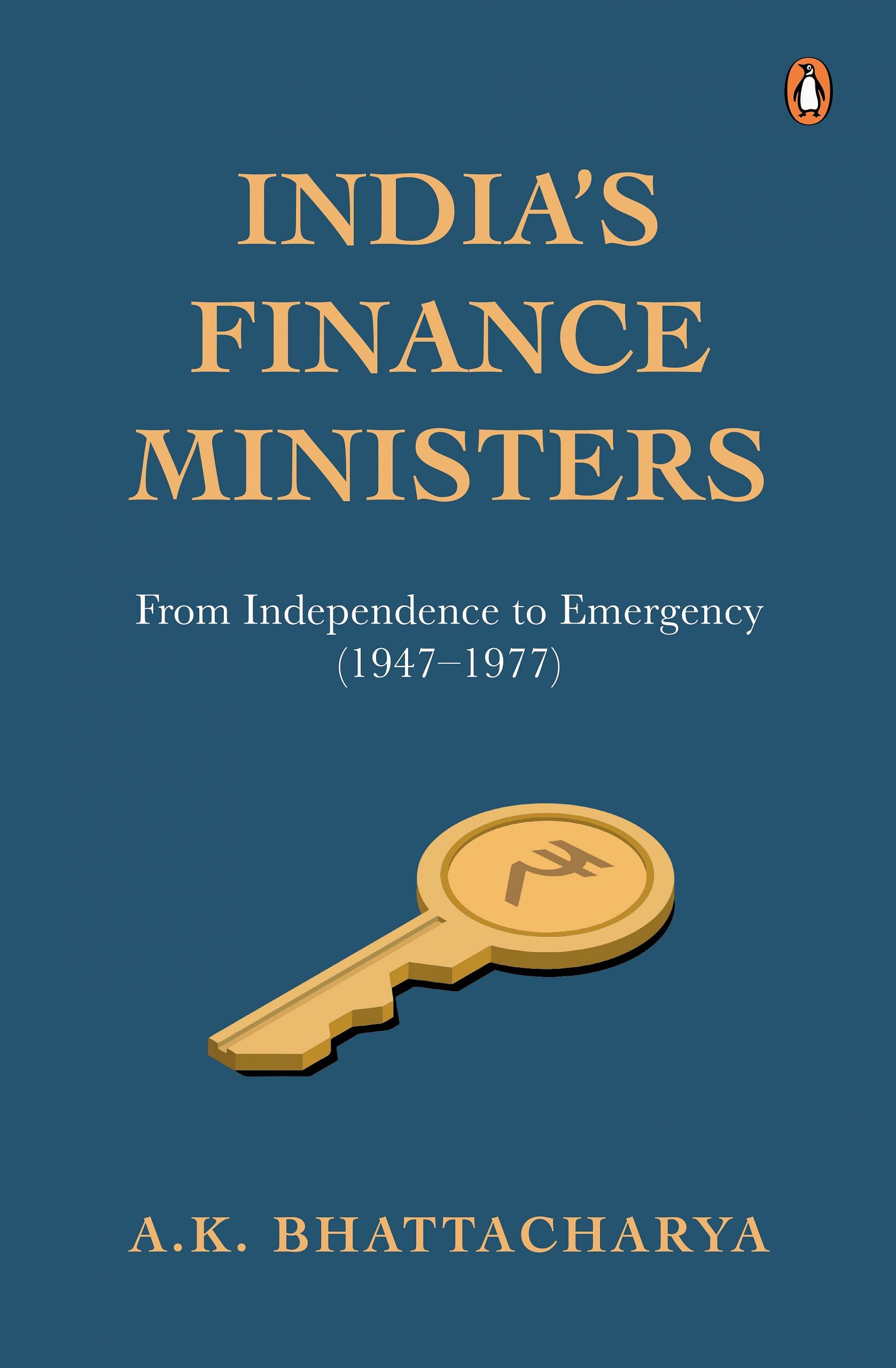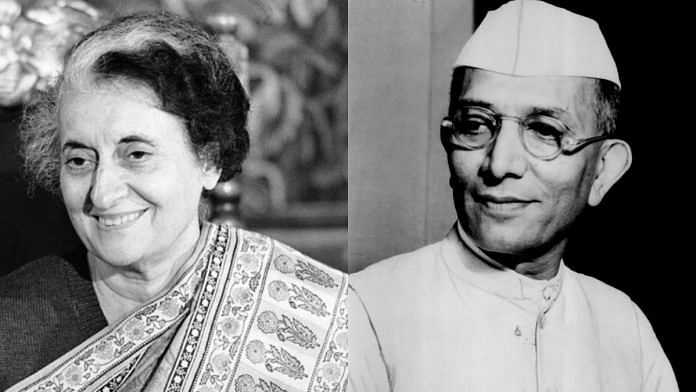The relationship between Indira Gandhi and Morarji Desai was always tense. There was mutual lack of trust between the two. Yet, Desai was accepted by Gandhi as a member of her Cabinet, mainly because of political compulsions. She may have sensed that Desai was not one among her arch rivals forming the nucleus of the Congress Syndicate. She also needed the administrative experience of Desai to run her government. On the other hand, Desai saw this as an opportunity to become the deputy prime minister as well as the finance minister in her government.
But this relationship did not last long, for two reasons. One, Gandhi soon found that Desai was not helping her in her battle with the old guard in the party—the Congress Syndicate led by K. Kamaraj, S. Nijalingappa, S.K. Patil and Atulya Ghosh, among others. Two, Gandhi found to her dismay that Desai was not willing to play along with her idea of bringing about a socialistic shift in the economic policies of the government.
While Gandhi was keen on nationalizing the private banks in the country, Desai was opposed to the idea, pointing out that instead of nationalizing them it would be better to introduce social controls for banks. Indeed, Desai had moved quite rapidly in ensuring social controls for banks. This essentially meant that the government’s objective of ensuring more equitable growth in the rural pockets of India had to be achieved by setting lending targets for banks to meet its socio-economic goal of greater financial inclusion. But Gandhi was unhappy with this idea and was keen on bank nationalization instead.
What complicated the political situation at the time was the sudden death of President Zakir Husain in May 1969. V.V. Giri, the Vice-President at that time and a close associate of Indira Gandhi, was made the acting President until the elections could be completed to find Husain’ssuccessor. The process of finding a candidate who could take over from the acting President posed yet another challenge for Gandhi. While the Congress Syndicate leaders wanted Neelam Sanjiva Reddy, who was at the time the Lok Sabha speaker, Gandhi was keen on Giri becoming the next president. This issue also became a bone of contention between Gandhi and Desai. The stalemate continued for more than two months.
Turbulent July
The month of July 1969 turned out to be hugely eventful for India’s politics and economy. In the second week of July 1969, a series of meetings of the Congress party in Bangalore highlighted the widening differences between Gandhi and Desai. At these meetings, Gandhi once again tried to push for bank nationalization, but Desai held his ground. In the final round of these meetings, Gandhi seemed to have lost her other battle as well, with the Congress party deciding to nominate Sanjiva Reddy to be the party candidate for the post of President. But, as it eventually turned out, she managed to achieve both her goals.
On 9 July, Gandhi dispatched a note to the Congress working committee. The note, sent through Fakhruddin Ali Ahmed, who was then the minister for industrial development and a close ally of Gandhi’s, recommended nationalization of the major commercial banks in the country. With that note, Gandhi sprang a big surprise on Desai. The law on social control of banks had been passed and its implementation was taking place at a healthy pace. And just about four months before Gandhi’snote, the National Credit Council, a body set up under the law on social control for banks to ensure the desired direction of credit allocation, had held its third meeting. The third volume of the history of Reserve Bank of India says:
Indira Gandhi had, by then, decided to confront the Syndicate in what was a bid to wrest control of the party. She needed a dramatic issue and bank nationalization fitted the bill. Accordingly, she decided to precipitate matters. Indeed, hindsight as well as oral evidence from the main dramatis personae suggest that she had already decided upon nationalization. Only the details were left to be worked out by the Finance Ministry.
What did Gandhi’s note dated 9 July to the Congress working committee contain? She made no bones about her intentions. The note said:
There is a great feeling in the country regarding the nationalization of private commercial banks. We had taken a decision at an earlier AICC, but perhaps we may review it. Either we can consider the nationalization of the top five or six banks or issue directions that the resources of banks should be reserved to a larger extent for public purposes.
Not mincing words, Gandhi provided a policy rationale for the need for bank nationalization:
Even after the new policy of social control and reconstitution of boards of directors, the former industrialist chairmen of the banks still continue on the board and naturally influence the present chairmen who had previously been general managers. We may examine whether through legislation or otherwise we can prevent these men from continuing on the boards. The chief executive of the banks will not then feel obliged to the former Chairman and may be expected to take an independent line in regard to lending.
Morarji Desai fought tooth and nail against the move, arguing that the legislation on social controls for banks had been introduced only about five months ago, and any step towards bank nationalization at that stage would undermine the people’s confidence in the banking system. Bank nationalization as an idea could be discussed only after a couple of years, after judging the effectiveness of the law on social controls for banks, he pointed out. But just as Desai was backed by the Syndicate, as also by the moderates within the Congress, Gandhi’s note on bank nationalization was supported by members of the Congress Forum for Socialist Action, also known as the ‘Young Turks’, like Chandra Shekhar and Mohan Dharia.
The note was discussed at the All-India Congress Committee session in Bangalore on 10 July. Expectedly, the Syndicate, ably supported by Desai’s arguments, ensured that the resolution on economic and social policy made no reference to bank nationalization, even though it talked eloquently on issues such as food supply, tenancy security and rural development.
But high drama followed soon thereafter, altering the actual course of the debate. The official draft, which had not mentioned bank nationalization, was challenged by Gandhi at the discussion stage. Herloaded question, referring to the official draft, was: ‘This is all right as far as it goes. The question is whether it goes far enough?’2 That question triggered a heated debate. Desai argued that there were no essential differences between the objectives of social control of banks and bank nationalization. The minimum amount that banks had to invest in public securities had already been raised—from the earlier mandatory level of 25 per cent to 29 per cent—and this share could be raised to even 30 per cent, Desai pointed out, noting in addition that the newly created National Credit Council was meeting regularly and its next meeting scheduled at the end of July could take a decision on that.
Gandhi had also made a stinging attack on the nexus between the top bank managements and the banks’ industrialist-owners or chairpersons. She had said the industrialist owners of banks were influencing the lending decisions of the bank managements. In defence, Desai said allegations of such a nexus were being examined, with both the government and the RBI closely monitoring the situation to prevent the exercise of any such influence; many steps had been taken to make sure no such influence could be exercised, and indeed the composition of many bank boards had already been diversified by including economists and representatives from the domains of agriculture, cooperatives and small industries.
Y.B. Chavan Bats for Bank Nationalization
A key and almost decisive role was played by Y.B. Chavan, who was then the home minister in the Gandhi Cabinet and was not seen to be on the side of Gandhi in her battle with the Syndicate. But, surprising many observers, Chavan remained apparently ambivalent, but his intervention in the debate seemed to strengthen the lobby in favour of bank nationalization. He made a rather cryptic comment that social control without nationalization was not possible, just as nationalization without social control would amount to a great fraud. In his view, nationalization of banks was only a matter of time, and he rejected the idea that the proposal was politically motivated in any way. Not entirely unrelated to this development, less than a year later, Chavan would be rewarded by Gandhi. He would succeed her as the finance minister in June 1970.
But on that day—10 July 1969—Gandhi used a clever ploy. The AICC session’s economic resolution made no categorical reference to bank nationalization, but Gandhi’s original note sent by her to AICC on 9 July was appended to the resolution. The resolution also pointed out that the note contained details of the policies to be followed to improve the economy and urged the governments at the Centre and the states to take steps to implement them. Surprisingly, the Syndicate members made no noise about it and let the resolution be adopted in that fashion.
A couple of days later, on 12 July, Bangalore saw the Congress Parliament board meet and, much to Gandhi’s consternation, the board decided to nominate Neelam Sanjiva Reddy, who was then the LokSabha Speaker, as the official Congress candidate for the Presidential election. The Syndicate had ceded ground to Gandhi in the matter of the economic resolution by agreeing to appending to it Gandhi’s note on bank nationalization, but made sure that Gandhi’s candidate, V.V. Giri, did not get the nod to be the official Congress candidate for the post of President. Of the eight members who were to decide on the nomination, two chose to abstain, two voted in favour of Giri and four cast their votes in support of Reddy.
 This excerpt from Untold Story of India’s Finance Ministers: From Independence To Emergency by AK Bhattacharya has been published with permission from Penguin Random House India.
This excerpt from Untold Story of India’s Finance Ministers: From Independence To Emergency by AK Bhattacharya has been published with permission from Penguin Random House India.



